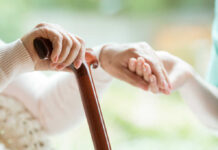
A “biological clock” is a term that describes the decline in women’s ability to conceive as they age. While some women are not bothered about this biological clock —either because they have already given birth or made the personal decision not to— those who still want to have children become more nervous as time passes.
This sense of urgency is not unusual, as many studies have indicated a decline in female fertility with age. In a committee opinion that reflected that research and data found in 2014 by the American Congress of Obstetricians and Gynecologists, the researchers discovered that throughout 12 insemination cycles, about 73 percent of women younger than the age of 31 achieved pregnancy. In addition, 62 percent of women between 31 to 35 had similar success, and only about 54 percent of women over 35 could get pregnant. Finally, it was noted that the rate of miscarriage in women progressing through their 30s consistently increased.
The general rule of thumb is that women aged 35 and older who try to conceive should receive more aggressive treatment than their counterparts under 35. Although this is not a recent discovery, no solid reason has been given for why this happens.
Older studies have reasoned that the theory of “cohesion loss” may explain women’s fertility rate decline. The theory was based upon the premise that older eggs tend to suffer from a loss of cohesion, where the “glue” that holds the chromosomes together stops functioning. Furthermore, in a test carried out on mice, it was discovered that there seemed to be further complications that could affect their fertility rate.
Data from research conducted at the University of Montreal Hospital Research indicates that older eggs in mice may also have instability at the microtubule level. This results in the abnormal division of cells. But how accurate can these mice studies be when it comes to human fertility?
Dr. Alan Copperman, the director of the Division of Reproductive Endocrinology and Infertility at RMA, noted that the mouse model is often used as the primary mammalian model for genetic research. This is because the ovaries of mice express tons of genetic and physiological similarities to humans, despite differences in ovarian senescence.
Conclusion
Despite this biological clock, scientists have made huge discoveries in the area of research over the past decade that may help in understanding infertility issues and even help many individuals and couples become parents. However, there is still plenty of room for improvement in infertility diagnosis, treatment, and embryo selection.
Currently, the success rate of egg retrieval for women under the age of 35 is about 48.2 percent, and this percentage falls as women get older. At the age of 42, the retrieval cycle is a mere 3.2 percent, yet the rate of women aged 40 or over pursuing other means of conception, such as In-vitro fertilization (IVF), has grown six times as fast as for women under the age of 35.



















